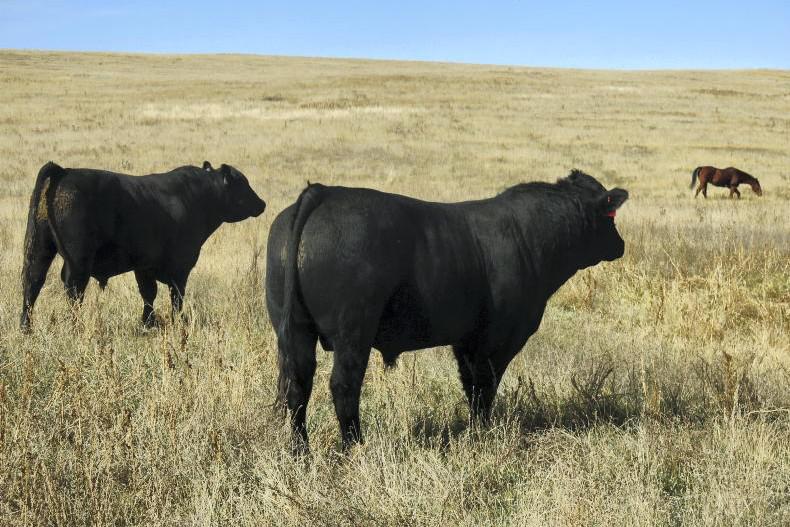In the past two years, US beef exports to China/Hong Kong have jumped from just over 20,000t to 263,000t to the end of November 2022.
US trade with China had been frustrated prior to 2020 due to sanctions and retaliatory measures during the Trump presidency.
A partial solution was found and a 'Phase 1 trade agreement' came into effect this time three years ago.
In it, China agreed to import more US produce - and beef was a major beneficiary.
From a standing start, China is now one of the top three export markets for US beef in both volume and value.
In the period January to November 2022, Japan led the way, taking 284,158t, followed by South Korea taking 267,664t and then China on 263,431t (US Meat Exporters Federation).
The other market that delivered spectacular growth for the US in 2022, albeit from a very low base, is Europe.
Up to end November, 18,473t were exported, up 43% on the 12,936t exported in the same period the previous year.
This is part of the ring-fenced 30,000t tariff-free quota agreed with the EU as settlement for the EU banning US hormone-fed beef.
Pork exports to China fall
US pork exports to China have fallen by over 200,000t between January and November 2022 from 700,758t to 486,123t.
This reflects a lack of demand in China for imports, as they have rebuilt their pig herd following the outbreak of African swine flu in 2019.
Coincidentally, the 31% decline in US pigmeat exports to China is the same as the 31% decline in Irish exports to China reported by Bord Bia in this week’s Performance and Prospects report.
Overall, US pork exports are down in 2022 from 2.7m tonnes to 2.4m tonnes. However, Mexico, the biggest export market, is showing an increase of 9% from 794,597t to 869,526t and South Korea has grown by 5% to 160,139t.
The Caribbean countries also showed growth, increasing by 35% to 92,538t, but, elsewhere, it is a mainly negative picture. Japan, the third-largest market, is down 9% to 331,657t, while Canada has fallen 12% to 179,395t.
Irish pig farmers won't need reminding of just how horrendous 2022 was for the sector, with the perfect storm of surging feed and energy costs meeting a weak export market, leaving a business that couldn’t meet its production costs.
Pigs are always a volatile sector, but with Chinese investment in rebuilding its herd, it is unlikely to be importing 5m tonnes annually in the near future, unless something totally unforeseen happens.
China and beef is a more interesting proposition. This has grown to be a 2.4m tonnes import market over the past decade and has hoovered up increasing South American exports along the way.
Despite the growing South American supply, the market has also grown significantly for Australia and New Zealand over this decade.
Ireland had a brief presence between late 2018 and May 2020 before an isolated atypical BSE case caused suspension.
What is particularly interesting is how the US has managed to grow its export business to China in the short period Ireland has been out of the market (Figure 1).
Its overall demand for beef has continued to grow, although United States Department of Agriculture (USDA) forecasts suggest it will drop back in 2023.
However, given the scale of demand and the fact that Irish exporters have invested in China over recent years suggests this will be the best hope Ireland ever has of achieving a meaningful beef export market outside of Europe.
Read more
Why resumption of beef exports to China is good news for beef farmers
Reopening of Chinese market presents opportunity for Irish beef
China can be the real deal for Irish beef exports
In the past two years, US beef exports to China/Hong Kong have jumped from just over 20,000t to 263,000t to the end of November 2022.
US trade with China had been frustrated prior to 2020 due to sanctions and retaliatory measures during the Trump presidency.
A partial solution was found and a 'Phase 1 trade agreement' came into effect this time three years ago.
In it, China agreed to import more US produce - and beef was a major beneficiary.
From a standing start, China is now one of the top three export markets for US beef in both volume and value.
In the period January to November 2022, Japan led the way, taking 284,158t, followed by South Korea taking 267,664t and then China on 263,431t (US Meat Exporters Federation).
The other market that delivered spectacular growth for the US in 2022, albeit from a very low base, is Europe.
Up to end November, 18,473t were exported, up 43% on the 12,936t exported in the same period the previous year.
This is part of the ring-fenced 30,000t tariff-free quota agreed with the EU as settlement for the EU banning US hormone-fed beef.
Pork exports to China fall
US pork exports to China have fallen by over 200,000t between January and November 2022 from 700,758t to 486,123t.
This reflects a lack of demand in China for imports, as they have rebuilt their pig herd following the outbreak of African swine flu in 2019.
Coincidentally, the 31% decline in US pigmeat exports to China is the same as the 31% decline in Irish exports to China reported by Bord Bia in this week’s Performance and Prospects report.
Overall, US pork exports are down in 2022 from 2.7m tonnes to 2.4m tonnes. However, Mexico, the biggest export market, is showing an increase of 9% from 794,597t to 869,526t and South Korea has grown by 5% to 160,139t.
The Caribbean countries also showed growth, increasing by 35% to 92,538t, but, elsewhere, it is a mainly negative picture. Japan, the third-largest market, is down 9% to 331,657t, while Canada has fallen 12% to 179,395t.
Irish pig farmers won't need reminding of just how horrendous 2022 was for the sector, with the perfect storm of surging feed and energy costs meeting a weak export market, leaving a business that couldn’t meet its production costs.
Pigs are always a volatile sector, but with Chinese investment in rebuilding its herd, it is unlikely to be importing 5m tonnes annually in the near future, unless something totally unforeseen happens.
China and beef is a more interesting proposition. This has grown to be a 2.4m tonnes import market over the past decade and has hoovered up increasing South American exports along the way.
Despite the growing South American supply, the market has also grown significantly for Australia and New Zealand over this decade.
Ireland had a brief presence between late 2018 and May 2020 before an isolated atypical BSE case caused suspension.
What is particularly interesting is how the US has managed to grow its export business to China in the short period Ireland has been out of the market (Figure 1).
Its overall demand for beef has continued to grow, although United States Department of Agriculture (USDA) forecasts suggest it will drop back in 2023.
However, given the scale of demand and the fact that Irish exporters have invested in China over recent years suggests this will be the best hope Ireland ever has of achieving a meaningful beef export market outside of Europe.
Read more
Why resumption of beef exports to China is good news for beef farmers
Reopening of Chinese market presents opportunity for Irish beef
China can be the real deal for Irish beef exports










SHARING OPTIONS